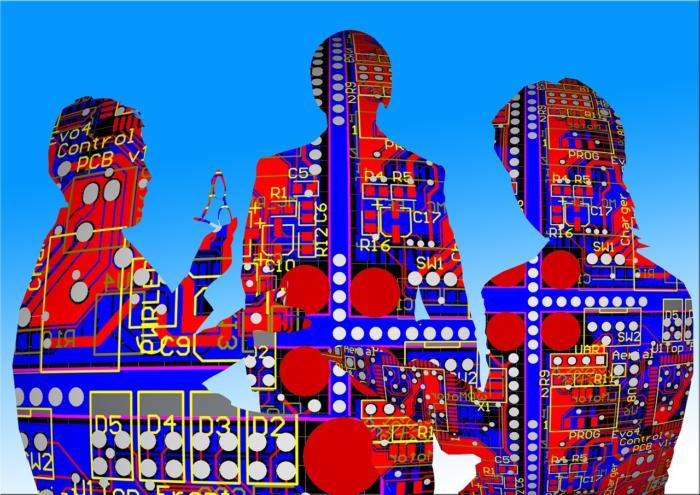In every field, there’s a pioneer, a prototype, an individual or group that blazed the path forward to uncover previously hidden value. Observing the giants in artificial intelligence allows us to revisit the early instrumental concepts in the development and maturation of the field.
copyright by www.cio.com
Biological principles are the roots of swarm intelligence , and self-organizing collective behavior is its organizing principle. Better understanding these foundational principles results in the ability to accelerate the development of your business applications.
The movers and shakers of artificial intelligence
Allen Newell was a researcher in computer science and cognitive psychology at the RAND Corporation and Carnegie Mellon University’s School of Computer Science. His primary contributions to information processing, in collaboration with Herbert A. Simon, were the development of the two early A.I. programs: the Logic Theory Machine (1956) and the General Problem Solver (1957).
Herb Simon was an economist, sociologist, psychologist and computer scientist with specialties in cognitive psychology and cognitive science, among many other fields. He coined the terms bounded rationality and satisficing . Bounded rationality is the idea that when individuals make decisions, their rationality is limited by the tractability of the decision problem, the cognitive limitations of their minds and the time available to make the decision. Satisficing (as opposed to maximizing or optimizing) is a decision-making strategy or cognitive heuristic that entails searching through the available alternatives until an acceptability threshold is met.
John McCarthy was a computer science and cognitive scientist who coined the term artificial intelligence. His development of the LISP programming language family, which heavily influenced ALGOL, an early set of a programming language developed in the mid-1950s, emphasized the value of timesharing. Timesharing today is more commonly known as multiprogramming or multitasking, where multiple users share computing resources. McCarthy envisioned this interaction in the 1950s, which is nothing short of unbelievable.
Marvin Minsky, a cognitive scientist, was the co-founder of MIT’s artificial intelligence laboratory. In 1963, Minsky invented the head-mounted graphical display that’s widely used today by aviators, gamers, engineers and doctors. He also invented the confocal microscope, an early version of the modern laser scanning microscope.
Together these framers laid the foundation for artificial intelligence as we know it today.
The design for mass collaboration
Do we understand collaboration? Thanks to Kurt Lewin and his research on group dynamics, we understand how groups interact much better than we thought. I ask again, do we understand group interactions? Is there an ideal group size? What’s the best balance of independence? Is the group interaction better or worse when we design in patterns for group activities?
Thank you for reading this post, don't forget to subscribe to our AI NAVIGATOR!
read more – copyright by www.cio.com


In every field, there’s a pioneer, a prototype, an individual or group that blazed the path forward to uncover previously hidden value. Observing the giants in artificial intelligence allows us to revisit the early instrumental concepts in the development and maturation of the field.
copyright by www.cio.com
Biological principles are the roots of swarm intelligence , and self-organizing collective behavior is its organizing principle. Better understanding these foundational principles results in the ability to accelerate the development of your business applications.
The movers and shakers of artificial intelligence
Allen Newell was a researcher in computer science and cognitive psychology at the RAND Corporation and Carnegie Mellon University’s School of Computer Science. His primary contributions to information processing, in collaboration with Herbert A. Simon, were the development of the two early A.I. programs: the Logic Theory Machine (1956) and the General Problem Solver (1957).
Herb Simon was an economist, sociologist, psychologist and computer scientist with specialties in cognitive psychology and cognitive science, among many other fields. He coined the terms bounded rationality and satisficing . Bounded rationality is the idea that when individuals make decisions, their rationality is limited by the tractability of the decision problem, the cognitive limitations of their minds and the time available to make the decision. Satisficing (as opposed to maximizing or optimizing) is a decision-making strategy or cognitive heuristic that entails searching through the available alternatives until an acceptability threshold is met.
John McCarthy was a computer science and cognitive scientist who coined the term artificial intelligence. His development of the LISP programming language family, which heavily influenced ALGOL, an early set of a programming language developed in the mid-1950s, emphasized the value of timesharing. Timesharing today is more commonly known as multiprogramming or multitasking, where multiple users share computing resources. McCarthy envisioned this interaction in the 1950s, which is nothing short of unbelievable.
Marvin Minsky, a cognitive scientist, was the co-founder of MIT’s artificial intelligence laboratory. In 1963, Minsky invented the head-mounted graphical display that’s widely used today by aviators, gamers, engineers and doctors. He also invented the confocal microscope, an early version of the modern laser scanning microscope.
Together these framers laid the foundation for artificial intelligence as we know it today.
The design for mass collaboration
Do we understand collaboration? Thanks to Kurt Lewin and his research on group dynamics, we understand how groups interact much better than we thought. I ask again, do we understand group interactions? Is there an ideal group size? What’s the best balance of independence? Is the group interaction better or worse when we design in patterns for group activities?
Thank you for reading this post, don't forget to subscribe to our AI NAVIGATOR!
read more – copyright by www.cio.com
Share this: